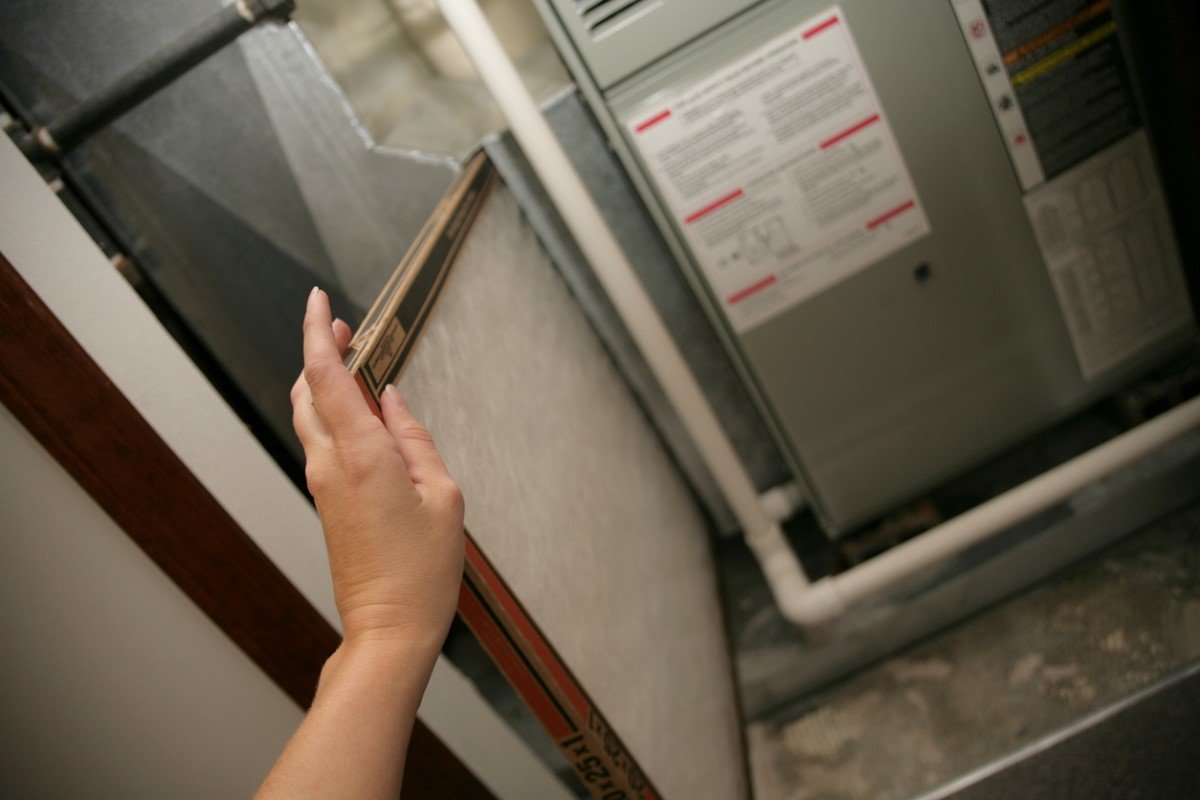We may earn revenue from the products available on this page and participate in affiliate programs. Learn More ›
Dust bunnies are multiplying, dog hair is piling up, and allergies are worsening—oh my, it must be the furnace filter! To change a furnace filter is perhaps the quickest and easiest way to maximize the efficiency of your heating system and to help purify your home’s air.
Basic furnace filters are designed to trap dust, dirt, and airborne particulates before they can get into the system and potentially damage the fan or the heating coil. More expensive filters perform the same role, plus they can enhance the air quality in your home by trapping bacteria, pollen, and mildew and mold spores. Since most of the air in your house circulates through your HVAC system, furnace filters are your first line of defense against dust and airborne allergens.

So how do you know when it’s time to change a furnace filter?
Here are some general guidelines for how often to change furnace filters—although, as always, it is a good idea to check your owner’s manual for the manufacturer’s maintenance recommendations.
Typically you should change a basic fiberglass furnace filter every one to two months and paper furnace filters every four months to a year.
Electrostatic furnace filters last the longest of all, several years if cleaned every four to six weeks. Such furnace filters should be cleaned more frequently if any of the following are true:
- You have one or more furry pets.
- You notice excessive to moderate dust buildup in your house.
- One or more people in your home smoke.
- Your heating system fan runs most of the time.
- You open your doors and windows frequently.
- You notice dust or dirt buildup on your current filter.
What type of furnace filter should you use?
There are numerous options available in furnace filtration.
The most basic model is an inexpensive disposable fiberglass filter within a cardboard frame, typically one or two inches thick and available in a variety of sizes. The fiberglass interior traps larger particles of dust and dirt. These filters, like the E-Z Flow Air Filters (available on Amazon), are designed to be thrown away after one to two months.
A step up from the basic filter is a disposable pleated paper filter, which will remove smaller particles of dust, dirt, and pollen. Varieties like the MERV 8 air filters by FilterBuy (available on Amazon) are a bit pricier but will last from four months to one year.
The most expensive filters are reusable electrostatic filters, which are designed to trap even smoke and smaller airborne particles. Options like the 6-stage Electrostatic Air Filters (available on Amazon) are able to be rinsed clean with a garden hose as needed and reused for several years if properly maintained.
Note: Some filters—in both disposable and reusable varieties—are rated as “antimicrobial” or “high-efficiency particulate air” (HEPA) and are specially treated to trap microorganisms, including bacteria, mildew, fungus, mold, yeast, and algae. If someone in your family has allergies, it may be worth investing in this filter type.

How do you change a furnace filter?
Changing the filter is a fairly easy task. Again, consult your manual for proper procedure, but typically the process for how to change a furnace filter goes as follows:
- Turn off the furnace.
- Locate the service panel and remove it.
- Slide out the existing filter (located near the intake/outtake blower fan).
- Slide in a new filter.
- Turn the furnace back on.


